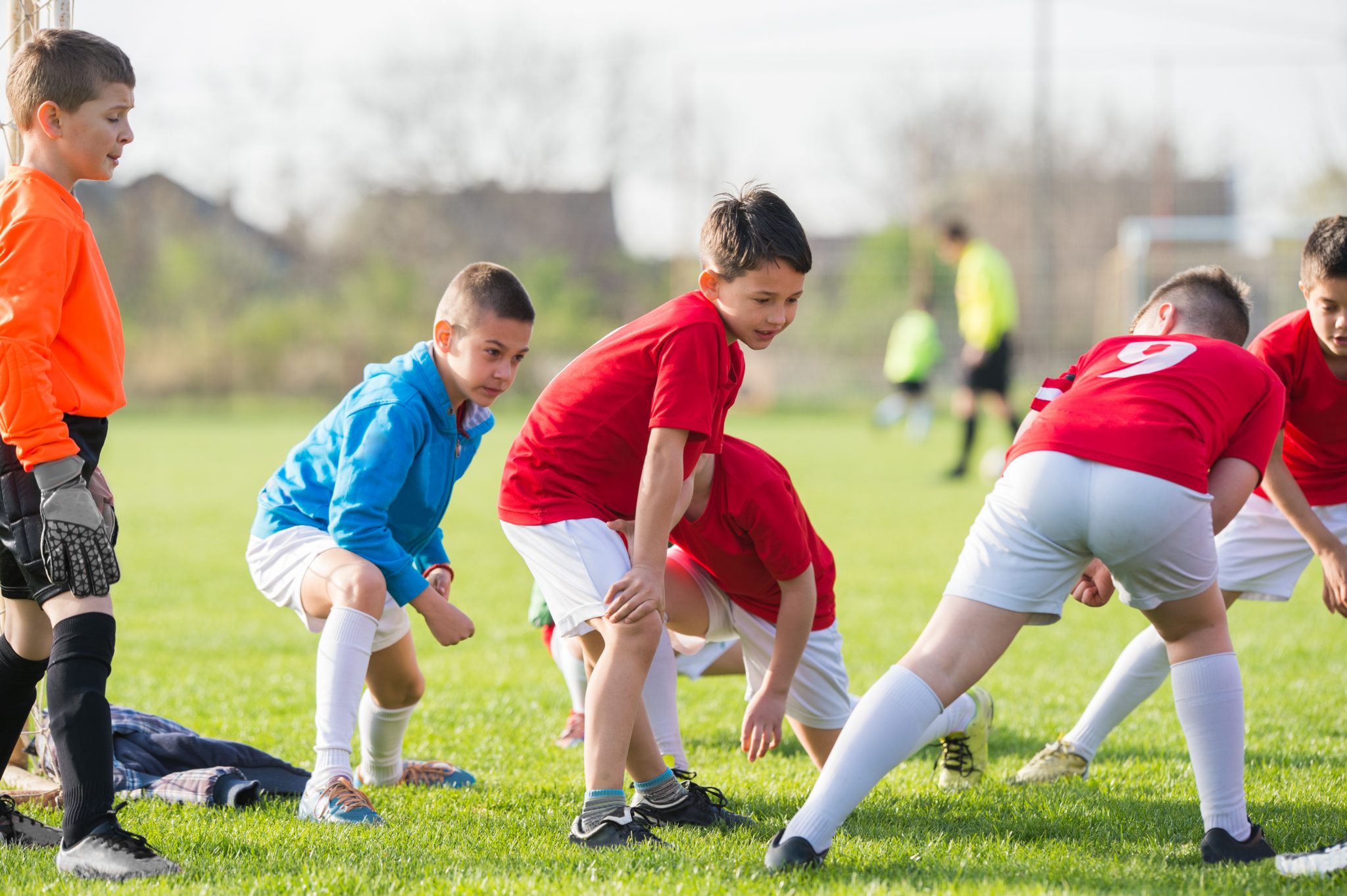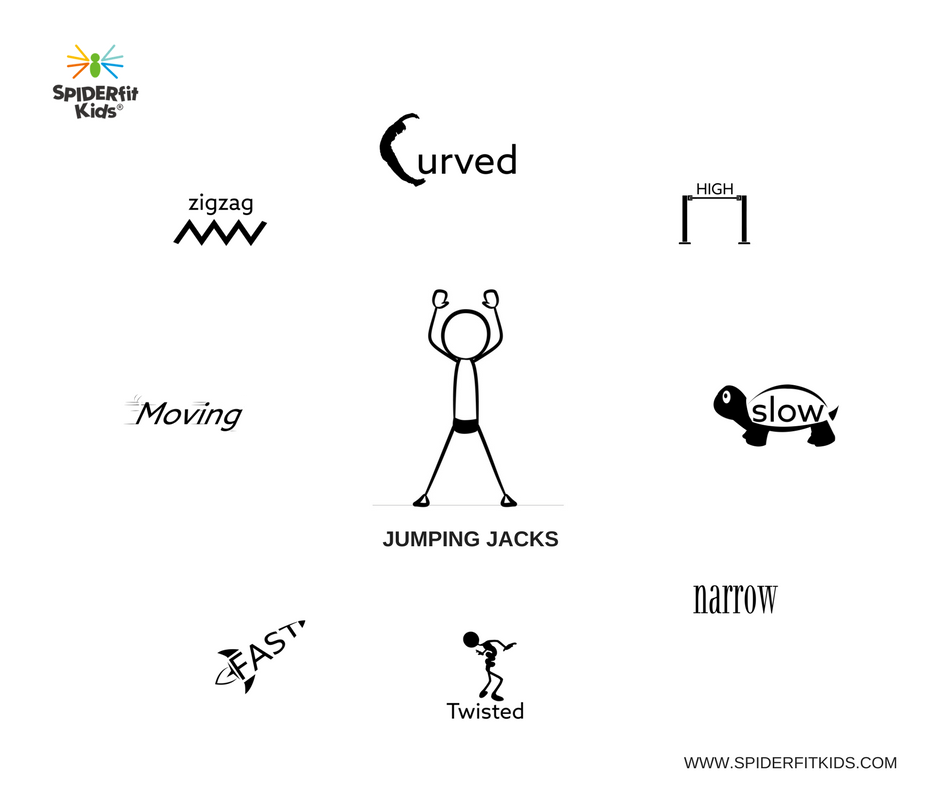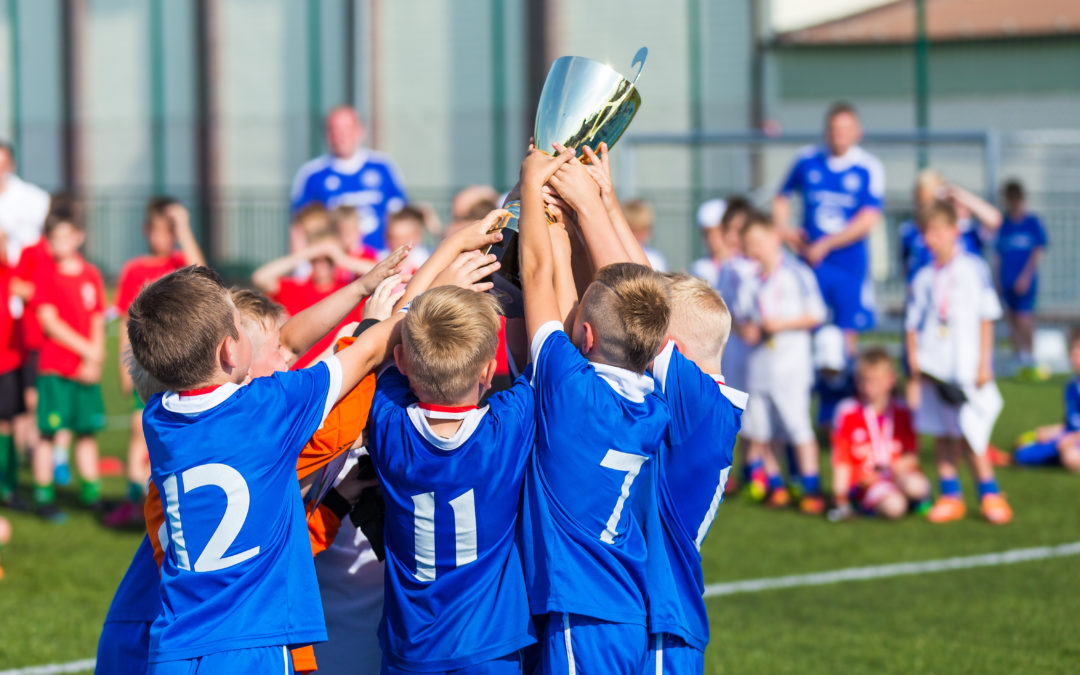Stretching….Is dead!
Well, not really. (That’s just a really catchy headline.)
In reality, the stretching we grew up with still has some benefit for our kids, we’ve just found it needs to be applied differently to provide a benefit.
We’ve actually discovered that “static” stretching (touching your toes, etc.) prior to an activity does not provide the benefits we originally thought it did. Actually, it appears it may actually contribute to injury.
If you think about it, forcing a cold muscle into an extreme position doesn’t make much sense. To compound insult with the illogical, sitting on the ground touching our toes doesn’t really prepare the brain’s coordination centers for running in multiple directions, accelerating, decelerating, and everything in between.
 If you want to get your kids ready to play, maximizing performance and minimizing the risk of injury, research suggests providing some general and specific challenges, similar to those a child will see during their sport or activity, during a warm up.
If you want to get your kids ready to play, maximizing performance and minimizing the risk of injury, research suggests providing some general and specific challenges, similar to those a child will see during their sport or activity, during a warm up.
So instead of beginning your child’s next practice with the jogging of laps and touching of toes, consider a warm up that challenges both the brain and body with different movements, reactions, and sensory demands.
Static stretching is best done after the final whistle, before the orange slices.
The “Right” Type of Warm Up for Kids
There are literally thousands of ways to get kids moving, but if you haven’t spent your life studying how to create activities for kids, it’s a little overwhelming. Additionally, as a volunteer parent/ coach of the “Blue Super-Rockets”, you don’t much time to put a practice together.
Luckily, there’s a quick and simple framework anyone can use to create a warm up that maximizes performance while minimizing injury. This is the basic framework I’ve used for years with individuals, teams, and even adults.
Knowing how young attention spans work, you’ll have about five reasonable- quality minutes dedicated to a warm up before a mutiny is cast. In this short amount of time, you need to engage the general coordination centers of the brain, in addition to the neuromuscular patterns they will experience during their sport.
This is accomplished by splitting the warm-up time into two parts, about 2-3 minutes each. They’ll spend a total of about 20 seconds on each activity (10 seconds with 10 seconds transition/instruction time), so think a total of about 10-12 activities.
Out of these activities, half should be general coordination and sensory awareness, the other half, more specific to their sport.
For general coordination and sensory awareness, you can use a teaching/coaching technique called “guided discovery”. This is where you give the children a movement, then provide different “variables” for them to add to that movement. The goal isn’t perfect movement.
The goal is for them to improve the coordination between their body and brain as they continually adapt to new movement variables, for effort (fast, slow, etc.), space (direction, limbs, etc.) and relationships (under, over, around, etc.)
The Quick “How To”
For example, write down 5 locomotion or calisthenics exercises you know.
Here’s some ideas: 
- Push Ups
- Skipping
- Running
- Shuffling
- Jumping Jacks
Next to each, write down 2 ways you could add a “variable” to each movement. Think about the effort, space, and relationships to objects and other people.
Push ups with the arms and legs wide, then narrow
Skip fast, then slow, or forward, then backward.
Keep it simple. The more experience you and your kids have, the more variables you can layer (skip fast sideways with arms wide and legs narrow).
Do each exercise/variable combo for about 10 seconds, then introduce the next. If kids are a little slow to adapt, use fewer exercises and go for a longer period of time.
After 5 or 6 exercise/variable combos write down another 5 or 6 specific movement demands they will experience during their sport.
Nearly every sport will require:
- Acceleration
- Deceleration
- Direction change
- Reaction
- Movement technique (specific for a sport, i.e. shuffling for basketball)
Thinking as simply as you can, write down 1 activity that involves each. If you’re at a loss, just go on YouTube (under SPIDERfit Kids, of course). Do about 20-30 seconds worth of each activity.
Below is a sample “Perfect Warm-Up” for any sport for 6-12 year olds.
- Jumping jacks in a circle, fast to slow 10 seconds
- Push ups with arms wide and legs narrow (then switch to arms narrow, legs wide about halfway through) 10 seconds
- Shuffle in a zigzag with arms above the head
- Squat while moving forward with the legs wide, (then switch to backward halfway through) 10 seconds
- Bear crawl backward with the hips high then low (Switch halfway through) 10 seconds
- 2-foot hop forward and backward fast, then side to side slow 10 seconds
- Wall drill (Running technique): Kids line up with hands on wall or fence, leaning the body 45 degrees to the ground. Bringing one knee up so the thigh is parallel to the ground, as in perfect running, kids switch legs on coach’s whistle. 20 seconds
- Sit to sprint (Acceleration): Kids sit on ground and pop to feet on whistle, immediately sprint 15 yards. 20 seconds or 2 repeats each.
- Red light/ green light (Deceleration/acceleration): 20 seconds
- Agility rodeo (Direction change): Child starts seated, stands up on the coaches whistle and coach designated a direction (forward, back, side, side, etc.) to move by making hand gestures. 20 seconds
- Partner mirror drill (Reaction, Acceleration/deceleration): Partners line up shoulder to shoulder or face to face. One partner is the leader. Partners move across 15-20 yard field changing pace. The “follower” has exactly mimic the accelerations, decelerations, and direction changes of the “leader” as closely as possible. Switch roles after 10 seconds.
After this, transition to game specific activities or drills.
Next time you are working with kids, try this fun, dynamic, and effective warm up to help them perform at their best while decreasing their likelihood of injury.
Go Blue Super-Rockets!
For a free guide with over 100 ideas for warm-up movement combinations, take home SPIDERfit Kids’ The Ultimate Youth Warm Up Cheat Sheet!
CLICK HERE and we’ll send you SPIDERfit’s Ultimate Youth Warm Up Cheat Sheet.
Craig Valency, MA, CSCS, president and co-founder of SPIDERfit, has been a personal trainer for the last 11 years. He is currently working at Fitness Quest 10 in San Diego, an elite personal training and athletic conditioning facility. He specializes in youth strength and conditioning programs that promote physical literacy, injury prevention and optimal performance. Along with training youths from 6 to 18 years of age for general fitness, Craig has also worked with some of the top junior tennis players in the world. He has been a physical education consultant for the Stevens Point school district in Wisconsin for the last 3 years, helping revamp the district wide programming for the K-12 PE curriculum. Craig earned his bachelor degree from UCLA, and Masters Degree in Kinesiology from San Diego State University.





Connect with SPIDERfit!